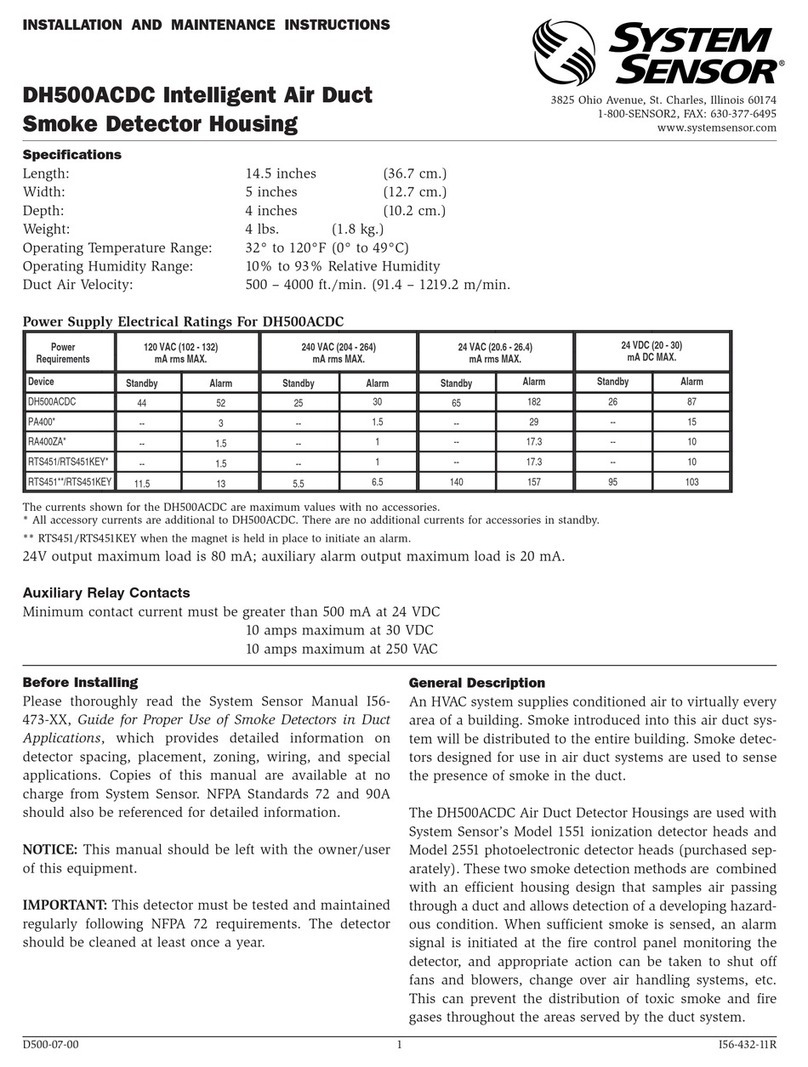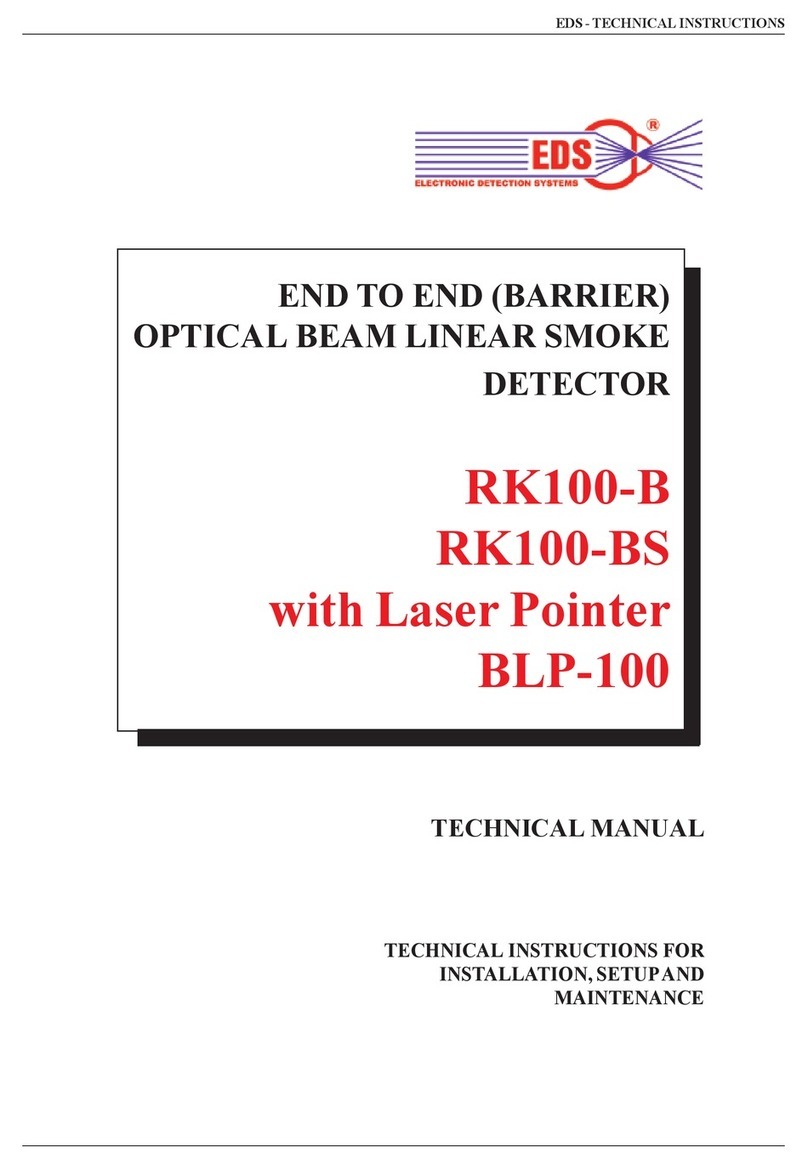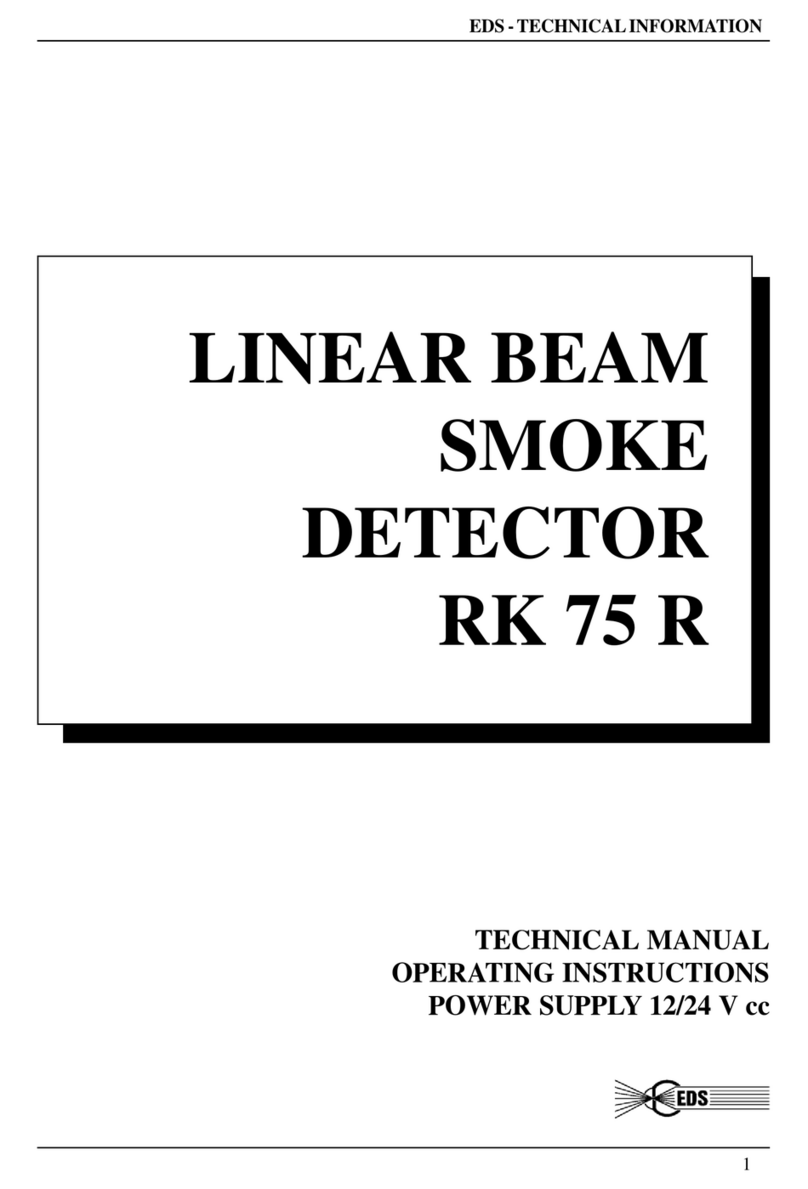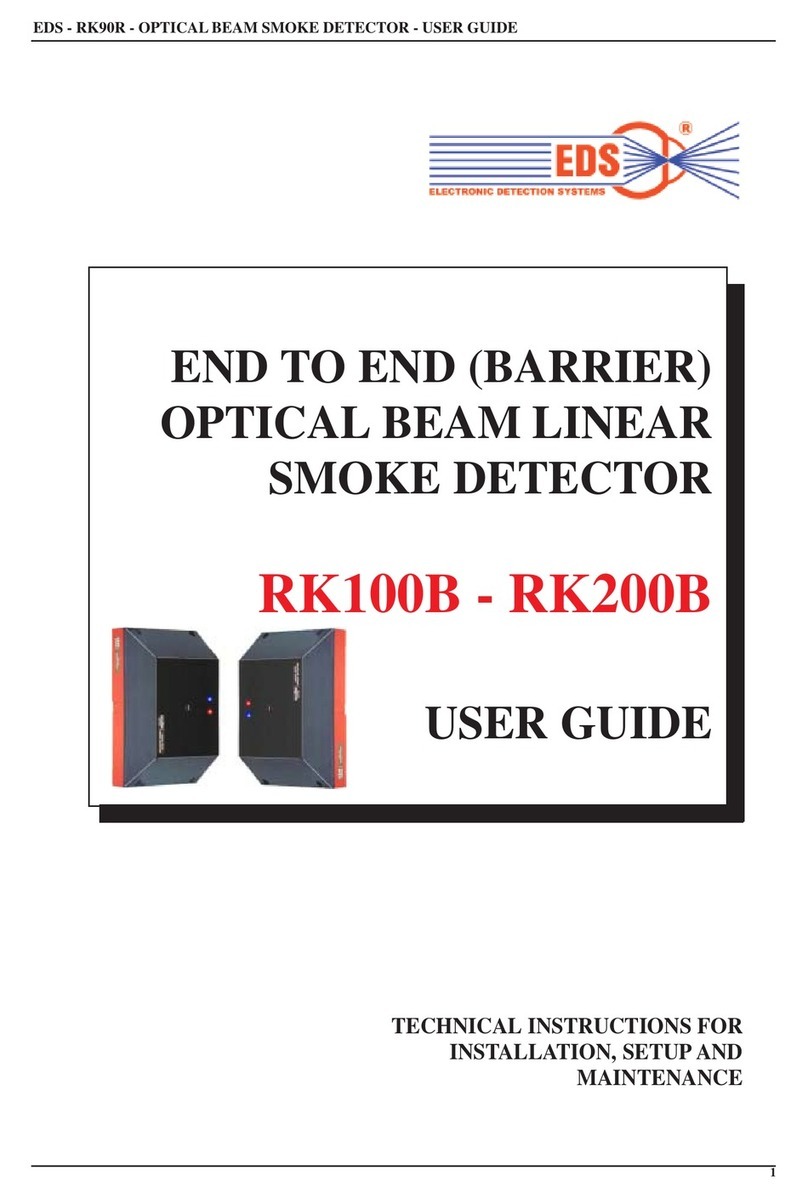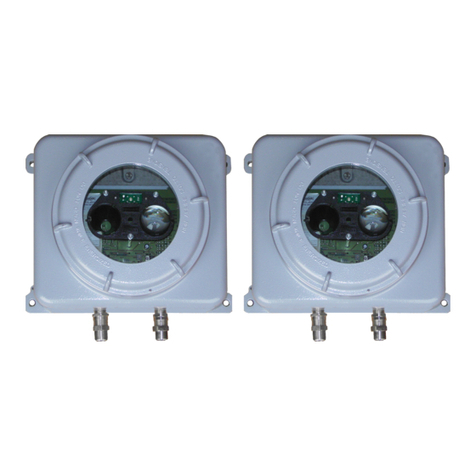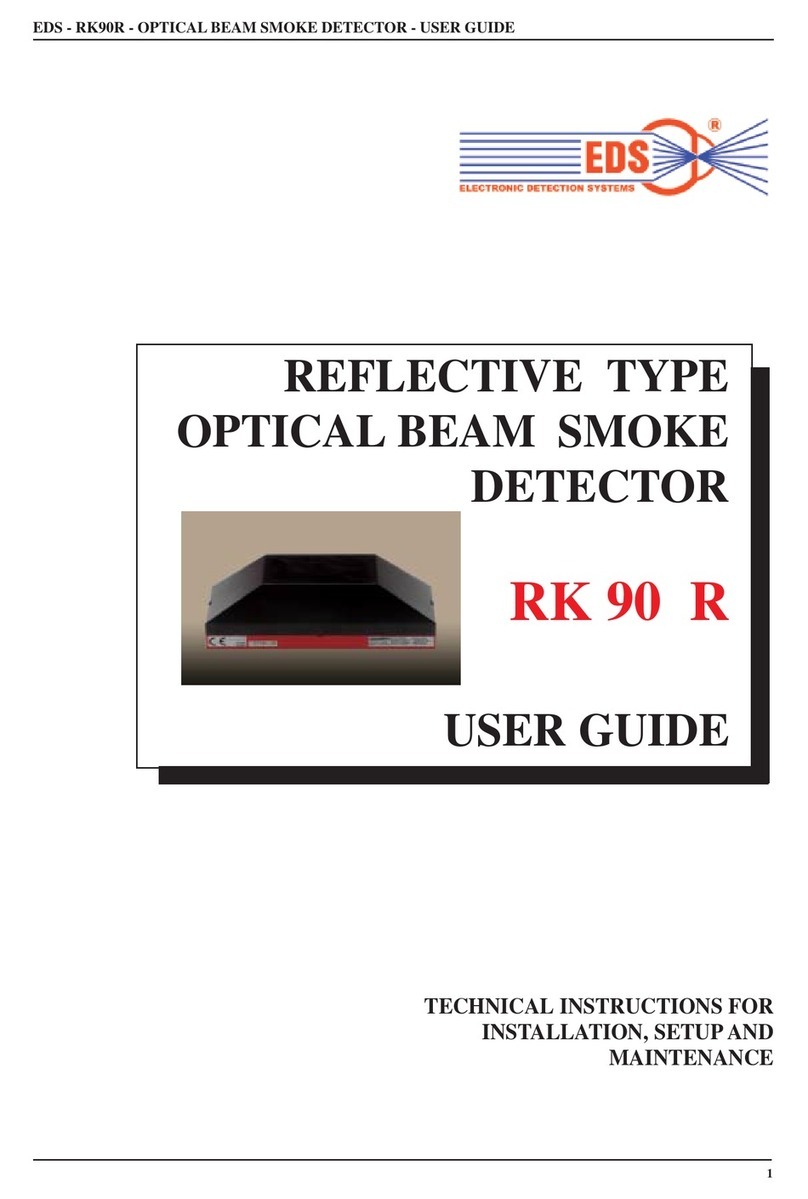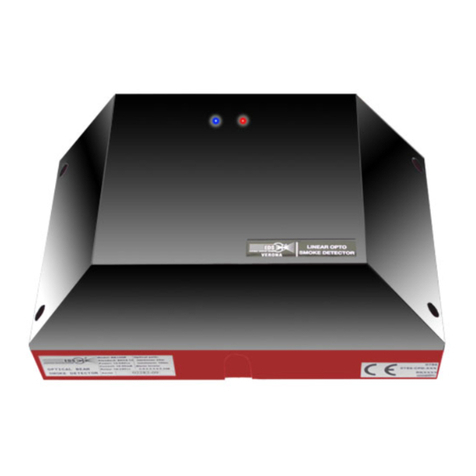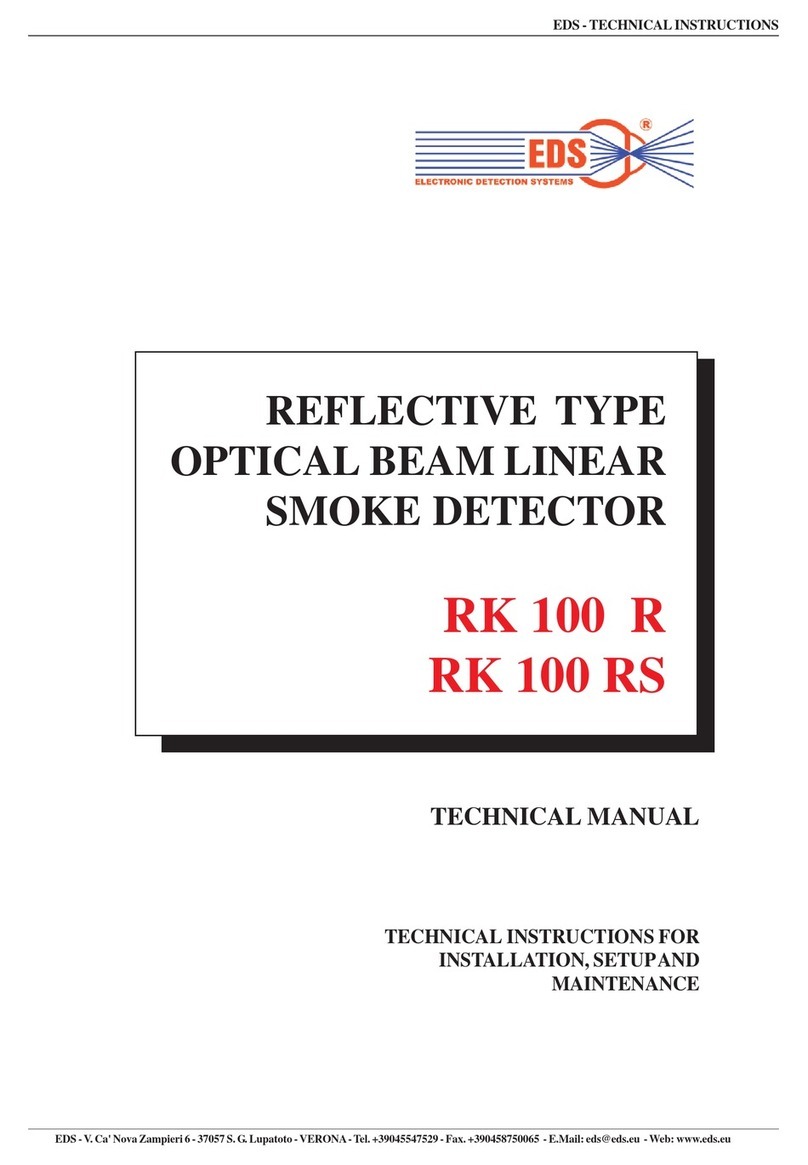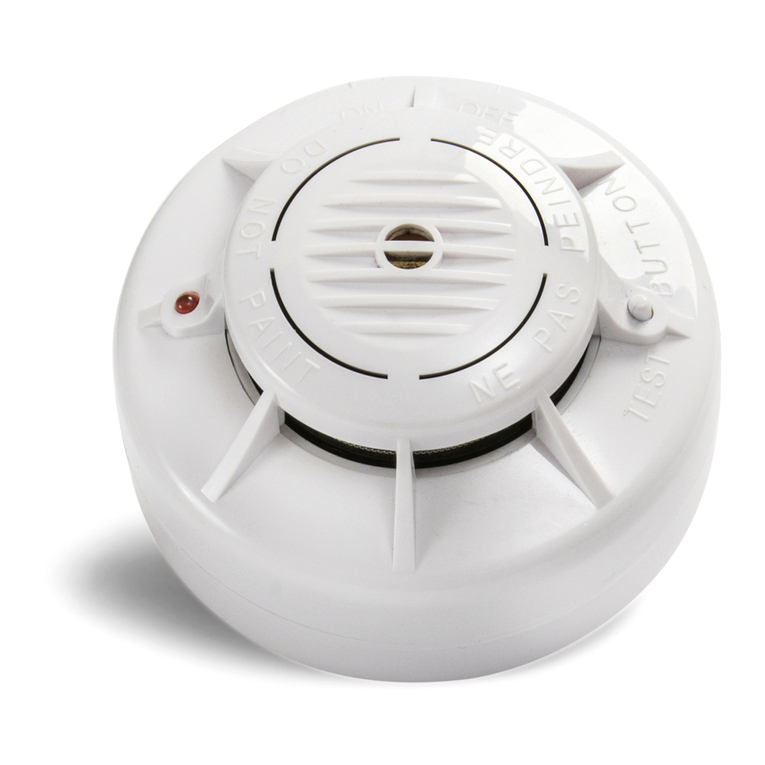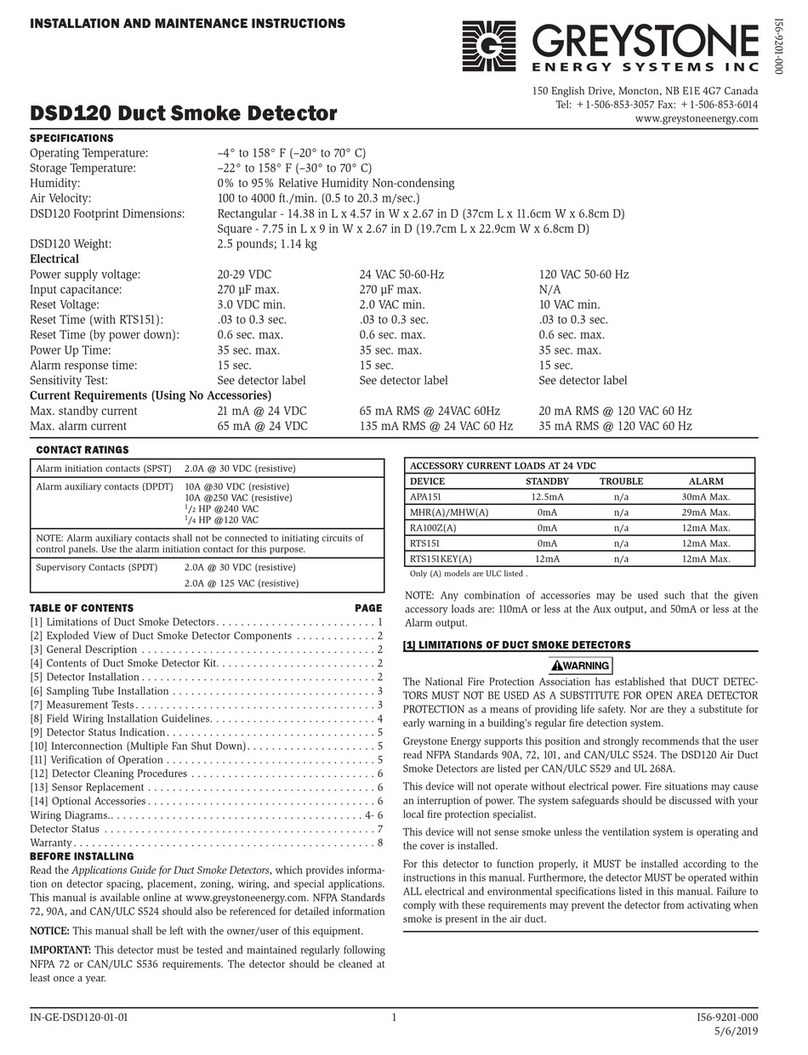
EDS - TECHNICAL INSTRUCTIONS
9
• If during the operation the signal overcomes 4,5V, to avoid the saturation, act on the trimmer P1 to bring the signal
back to 3 V, allowing the best evaluation of the variations of the signal
• After finding out the maximum level signal acting on the screw V1, perform the same operations on the screws V2 and
V3.
In such way the best possible position of optical allignment is reached. This procedure is important because it will assure a
perfect operation of the detector for long time
8.12 - If you don't have a Multimeter, it is still possible to get good results in the optical alignment of the detector, looking
at the detector’s blue and red leds indications. Operation is the following:
• 1 flash of the blue Led: 1 Volt
• 1 flash of the red Led: 0.5 Volts
• if the signal is smaller of 0.5V the blue led and red one are off
• if the signal in the range 0.5-1 V the red led flashes once, remains off for 2 seconds and then it repeats the sequence
• if signal is among 1-1.5 V the blue led flashes once, remains off for 2 seconds and then it repeats the sequence
• if signal is among 1.5-2V the blue led flashes once and the red led flashes once. They remain off for 2 seconds and then
the sequence is repeated
• if signal is among 2-2.5 V the blue led flashes 2 times, remains off for 2 seconds and then it repeats the sequence
• if signal is among 2.5-3V the blue led flashes 2 times and the red led flashes once. They remain off for 2 seconds and
then the sequence is repeated
• same type of indication up to 4 V
• if the signal overcomes 4 V, the blue led flashes faster and faster as the frequency signal increases up to 4.7V
• when the signal overcomes the 4.7V and in the range 4.7V - 4.9V, the blue led is continously ON. This is the position
of optimal setup
• if the signal gets over 4.9V the two blue and red leds are permanently ON
This is the saturation indication.
The table of fig.8 recaps the leds operation.
8.13 - After doing the operations of fine optical alignment using the Multimeter or the indications of the leds, you must
regulate the signal slowly acting on the trimmer P1, between 4.7V and 4.9V.
When the signal it is included within this range, the blue led is costantly ON.
This it is the position of optimal setup. If the signal overcomes the 4.9V, the detector goes in saturation and the blue and red
leds are both ON.
Therefore acting on P1, it is necessary to set the signal between 4.7-4.9V so that the red led switches OFF and is only the
blue Led remains ON (to avoid saturation).
Attention! - This adjustment is not critical. The above procedure is optimal, however, it is sufficient that the
signal is just above the 4V and the blue LED is blinking or lit, to have a good calibration. Avoid, however, the
saturation (red LED lit). The microprocessor automatically compensates for inaccuracies in the calibration.
If this signal adjustment is critical, or, if turning the trimmer with small movements, you notice big changes on
the signal level, review as described in cap. 8.10.
8.14 - It must be checked out that, since the detector bases its operation on the reflection of the projected beam, this
reflection is effected by its FX reflector and not by other elements.
To be certain that the signal is produced by the reflection of its FX reflector only and not by other elements, it is useful to
do a simple verification. It is necessary to obscure the reflector with a non reflecting screen (opaque).
In that case the signal on SIG terminal must decrease under 0,5V (check indications in the following pages).




